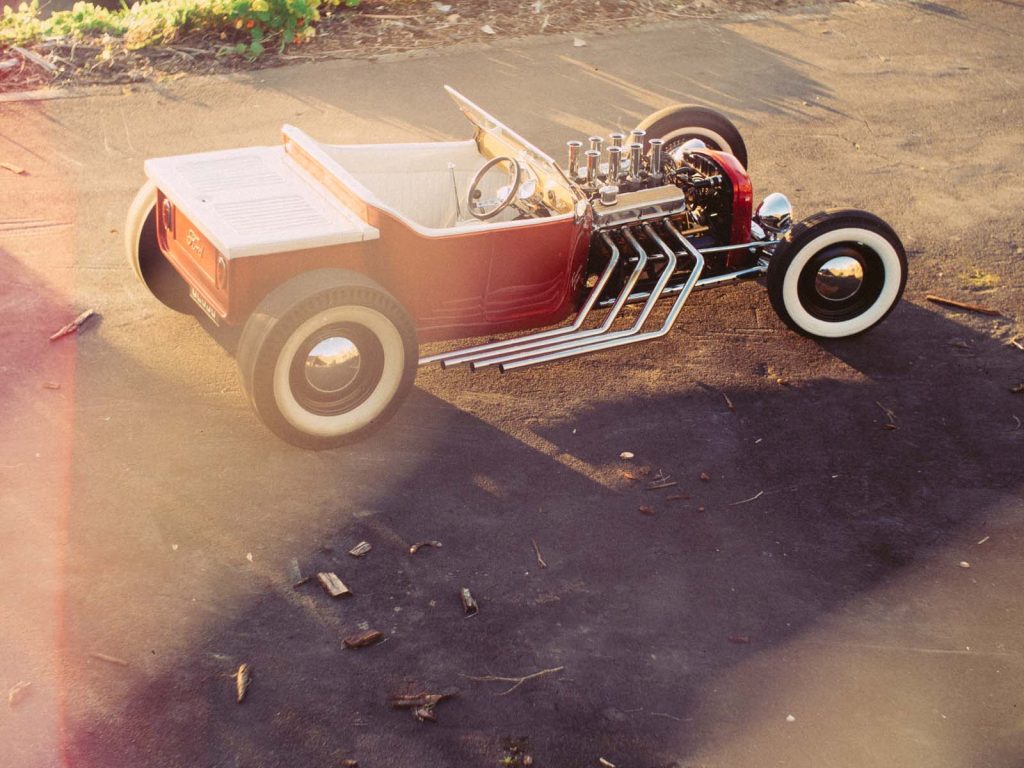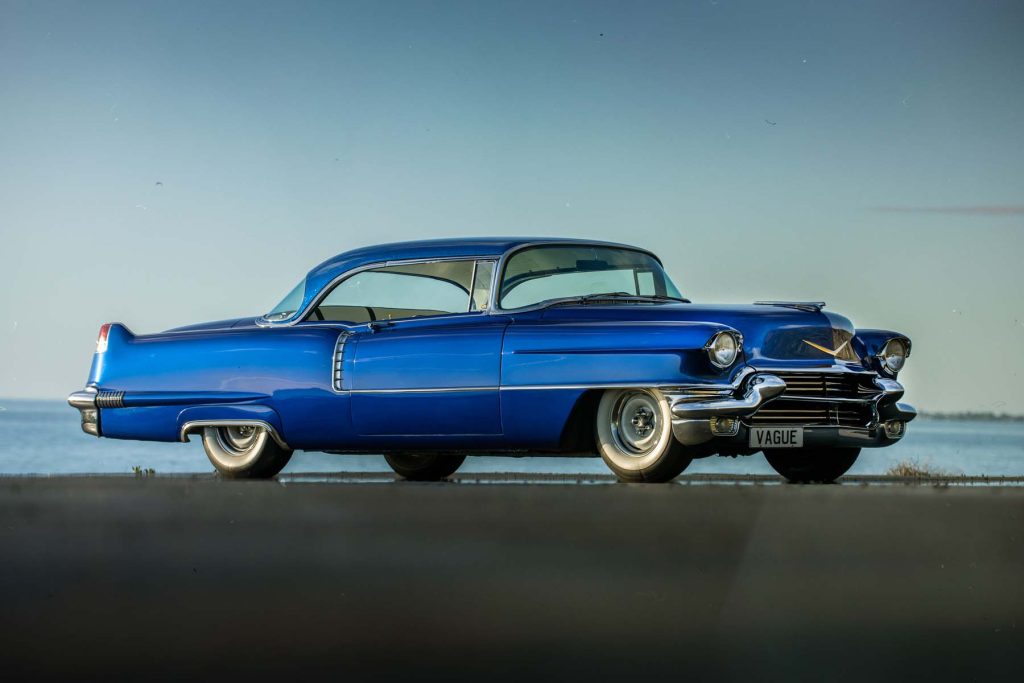Cal Thorley
Rolling Stone AU/NZ has partnered with Panhead Custom Ales to tell the stories of the New Zealand-based creatives who’re leading the way in lowbrow art.
Cal Thorley makes films about cars and carmakers. It’s what you might call “lowbrow art”, but for Thorley, whose specialist subject is the New Zealand kustom kulture scene, lowbrow is not a dirty word.
Thorley launched the web series Hot Rod Revue a decade ago. It was an immediate hit but stalled in the second half of the 2010s as Thorley got busy working in television. Thorley recently revived Hot Rod Revue and plans to take better care of it moving forward.
“It’s around the more traditional period-style hot rod and kustom kulture here in New Zealand,” Thorley says.
Thorley continues to film cars for various television programs and has an ongoing relationship with the kustom kulture-inspired brewery, Panhead. Thorley has been working on a series of short films that tie in with the limited-edition brews in Panhead’s custom can range. The custom cans are all modelled on famous cars or car makers from within Aotearoa’s kustom kulture scene.

The “Tumblin’ Dice”
“Basically the cans take inspiration from that vehicle or personality in the scene,” Thorley says. “[Panhead] put that into what they do best and that flows on into the artwork and even the name of the can—they’re all named after the people they’re inspired by.”
Thorley has created nine films for Panhead’s custom can range, including the one for Running On Empty, a 5% ABV Pacific pale ale inspired by what Thorley calls “a very angry ’57 Chevy gasser, which is a type of drag car.”
“I love ‘57s,” says Running on Empty’s owner and customiser, Fast Eddie, in Thorley’s three-minute film.
Love Music?
Get your daily dose of everything happening in Australian/New Zealand music and globally.
Gassers are distinguished by their somewhat comical design. Given the rudimentary tyre technology of the 1950s and 60s, hot rodders decided to raise the front of the vehicle so that the bulk of the weight was on the back wheels.
“It’s a wild ride,” says Fast Eddie of his ’57 gasser, which is named after the 1982 Australian action film, Running On Empty. “The idling of the cars, the big smokies, the wheel stands when you leave the [starting] line—it’s unpredictable.”
New Zealand is a country of five million people. It has a smaller population than Greater Sydney. But kustom kulture enjoys outsized popularity. Thorley estimates that, on a per capita basis, New Zealand might have one of the world’s largest kustom kulture communities.
“It’s an interesting scene. There’s a huge amount of camaraderie with it,” he says. “You can rock up to a car show and you get tired from walking two steps and saying hello to the next person you haven’t seen since the last car show.”
It’s not a monolithic scene, either. A multitude of niches and offshoots fall under the kustom kulture umbrella. For those who’re curious but not experts, Thorley recommends the annual rock’n’roll and vintage car festival, Beach Hop, in the Coromandel Peninsula.
“[Beach Hop] is a lot more of a general car show,” says Thorley. “So it can be the person that breathes, sleeps hot rods and has built their car from the ground up. But then parked next to them is someone who just loves old cars and has put one on the mortgage. There’s no intention to work on it themselves but they love getting out there and being part of it.”
There are plenty of events that cater to hardcore petrolheads. “You can go to a gathering of people and they’ll be very much into a certain subculture, be it really traditional hot rods or lowrider cars or specifically muscle cars,” says Thorley. “So there’s a bit of room for everyone.”

The “Necessary Evil”
Thorley is in his element creating films about people who’re passionate about kustom kulture. “I love it,” he says. And he’s not just attracted to petrol. “[The cars] have a personality all of their own, which often reflects the owner’s personality,” Thorley says. “They have names or individual colour schemes or things that give that vehicle specific character.”
Thorley’s films tend to splice footage of hot rods on the road and in the garage with in-depth storytelling, which is where the real gold comes from.
“The cars all are individual and they all have their own personality, but often it’s the person behind the car, it’s the story of the car to them and why they built something this way,” he says.
“At the end of the day, a motorbike has two wheels, a car has four wheels, but it’s the person behind it who has the real story.”





































